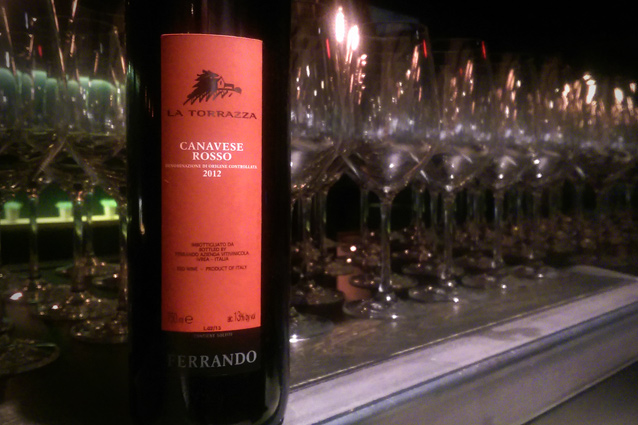One of the great challenges of putting together a wine list for a shared plate restaurant with a varied menu is that the wines have to be versatile enough to match a wide array of foods. A house favorite at the moment is the Ferrando Canavese Rosso, imported by Neal Rosenthal (New York).
This isn’t a bottle typically found in Michigan, but we fell in love with its charms and had a bunch shipped out just for us. In fact, we just found out that we committed to 7.6% of Ferrando’s entire annual production of this wine. And why the hell not? One of the real joys of owning a restaurant is that we can do cool stuff like bring in amazing wine to talk about with our amazing customers.

A few geographical facts: Canavese is a small region in the northern reaches of Piedmont, the Italian area known mostly for expressions of the nebbiolo grape from Barolo and Barbaresco. North of Turin, the region is quite close to the French and Swiss borders and is marked by steep, heavily terraced vineyards. Their wines are marked by a fresh, balanced acidity. The best wines will last, but even those seem to be approachable in their youth.
The Canavese Rosso, though, is their “entry level” wine, a moderately priced treasure that absolutely kills with a wide variety of foods. It’s loaded with honest, tart berry flavors – cranberry, raspberry, strawberry – but there’s enough of a rustic, earthy, mineral quality to give it pretty surprising complexity for the price. This particular wine is a blend of about 70% nebbiolo, 30% barbera, and a modest touch of a local grape called Neretta, which is light-bodied and is generally used in refreshing table wines. (It is also apparently known as Hibou Noir and has been used in French and Swiss regions like the Savoie, reinforcing our impression that the flavors of this Canavese have almost as much in common with these areas as it does with Piedmont.)
Like many of the wines we carry, the Canavese Rosso is made by a small producer anchored in traditional methods, aiming to preserve local grape varieties and characteristics. Luigi Ferrando’s family has been making wine in the region since 1900, and they are also known for working with the local indigenous grape Erbaluce.
We highly recommend this wine: It’s great with meats and anything grilled, but it has enough acidity and lightness to avoid clashing with lighter dishes. Also, it’s really damn delicious.